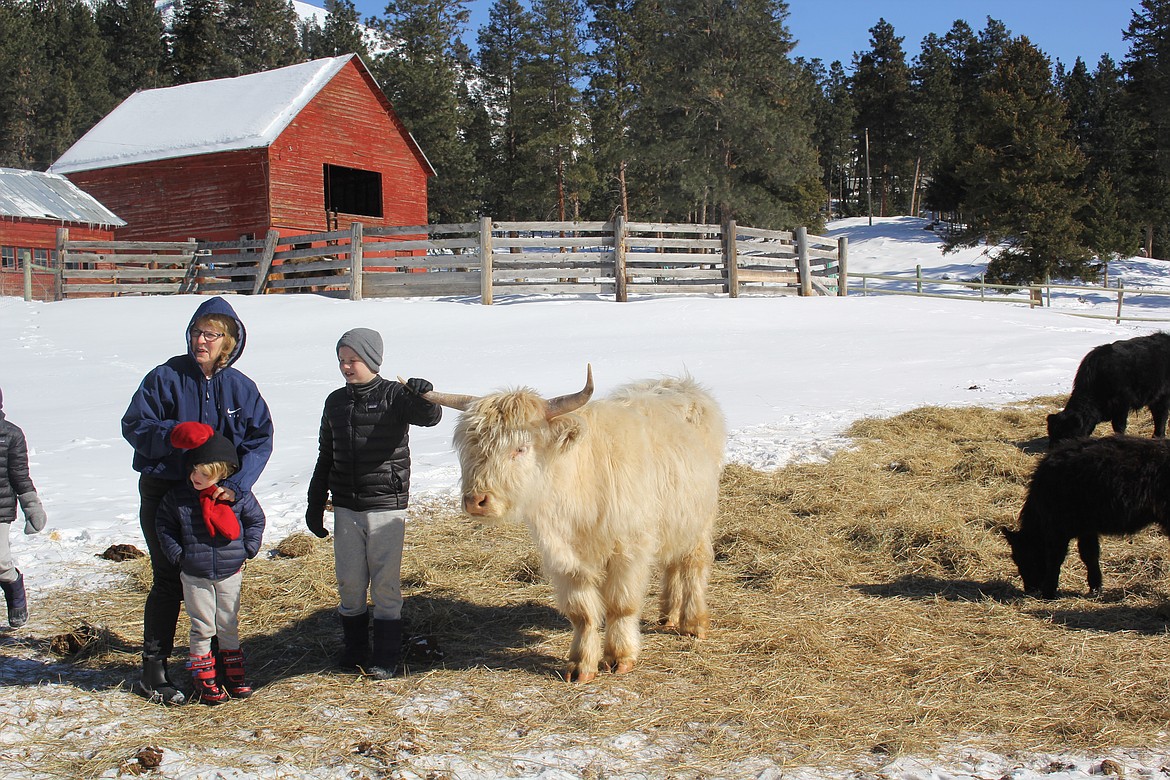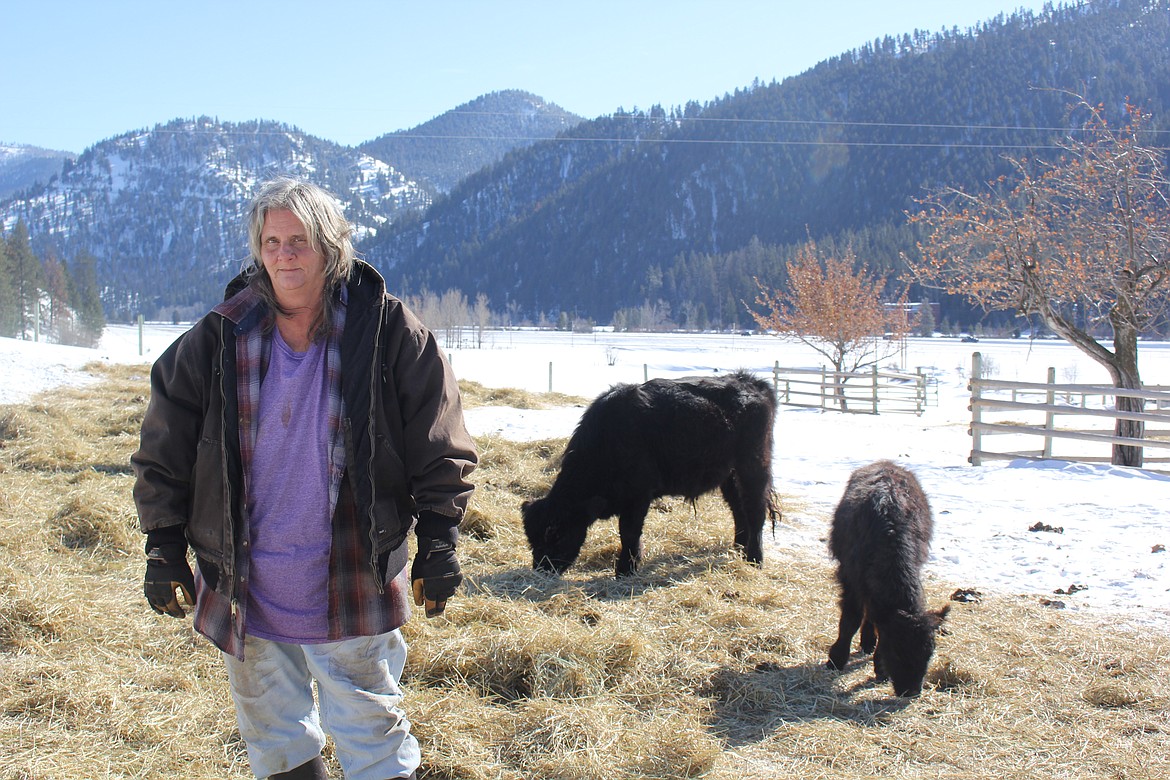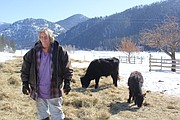Clinton ranch home to Montana's largest herd of Highland cattle
The Highland cow is the oldest registered breed of livestock in the world and is a Scottish class of rustic beef cattle. It originated in the Scottish Highlands and the Western Islands of Scotland, and both males and female have long horns and a long shaggy coat.
The late Queen had a herd of Highland cattle and it is rumored to be the only kind of beef she would eat.
This is a hardy breed, able to withstand the intemperate conditions in Scotland, and they also thrive near the Beavertail State Park just east of Clinton, Montana. That’s where the largest breeding "fold" lives in Big Sky country.
The manager of the ranch is Tracie McMillan who has been there for eight years. She has known the owner of the ranch, Wally Congdon, since 1977 when he was her debate coach at Hellgate High School in Missoula.
As with most livestock operations, McMillan has a Battlefield PhD in her type of cattle.
“These are smaller than Angus or Herefords so they run anywhere from 1,000 to 1,400 for bulls, and cows around 800-900 pounds. And we have every color they come in. Gray, silver white, red, brindle, orange and black.”
Congdon had Red Angus and a few Highlanders about 20 years ago but moved entirely to the Scottish Highlander.
“No, Angus cattle are a derivative of the Highlander. The MacIntosh and Aberdeen Angus, which we know as black and red today, don’t live as long nor do they produce as many years as Highlanders do. Mother Highlands are known for often breeding beyond the age of 18 and raising 15 or more calves in their lifetime. Impressive, hey? Plus, these cows are as friendly as dogs. Really! They’d crawl up and sit in your lap if you could support 1,000 pounds,” he howls.
“These cattle do not disperse when you drive through them in a field so a driver needs to be prepared that they will need to maneuver around many of them, especially if they are laying down,” Congdon said.
The property supports 127 head of Highlanders, which is called a fold rather than a herd. This is because in winter, the cattle were kept in open shelters made of stone called folds to protect them from the weather at night.
Telling the age of a Highlander is the same as a bighorn sheep. They develop a distinctive ring on their horns for each year of life.
Besides size, the most noticeable difference between the sexes is their horns. A bull’s horns often grow forward or even slightly downward and have a much wider base, whereas a cow’s horns face upward and are longer and finer at the tip.
These animals have become very popular in the art community with stuffed toys, original, metal and poster art, and many steak restaurants will find room to have a head-mount in their establishment. To purchase the head and horns of a large bull runs around $2,000 before you even take it to the taxidermist for a shoulder mount.
There doesn’t seem to be much demand for the hides, though.
“We sometimes sell just the hollow horns for black powder purposes, or wine,” said McMillan. “There’s a secret about Highlands. It took me some time to learn if their whiskers fit, they fit,” she said when it comes to getting through fencing.
“And there’s another reason they are called Highlands. They jump high and land well. The hay pen where we round them all up is 5 and a half feet tall, and they’ll clear it.” This escape strategy came up when she said that they like to swim in the Beavertail Pond in warmer weather which is about 3 miles west.
“But they’re so docile and accommodating that they come back on their own.”
Actor/composer and businessman, Shane Clouse has a smaller heard in the Bitterroot that originated from this stock.
“He’ll be bringing Buttercup, his big Highland cow, up to be bread to Dagwood or Cocoa. We haven’t decided yet,” McMillan said.
This breed produces lean but well-marbled flesh that ensures tenderness and a very distinctive flavor. Highland beef is healthy and nutritious with lower levels of fat and cholesterol and a higher protein and iron content than other beef. The Scottish Highlander's proven ability to produce top quality meat without the addition of expensive high-quality feeds makes this breed the perfect choice for those people who wish to produce beef with natural inputs. McMillan feeds around 3 each afternoon.
“Feeding this late in the day has proven there is less chance of them calving overnight.”
Congdon and McMillan said that they have had a couple of their cows live to be 32 years old. Their distinctive long hair keeps them warm in winter, offers protection from the brush and undergrowth, protects their eyes from flies and it contributes to their stunning appearance which makes them so popular. Having such long hair also means that they do not need to store the waste fat you find in some other breeds of cattle.
Highland cows can even be milked on a small scale. They will never make as much milk as a production dairy cow, but enough for personal use as one cow can produce on average around 2 gallons per day. Their milk has an extremely high butterfat content, up to 10%, which some farmers may find appealing, but others have stated is a required taste.
Find McMillan Scottish Highlanders on Facebook for further information.





